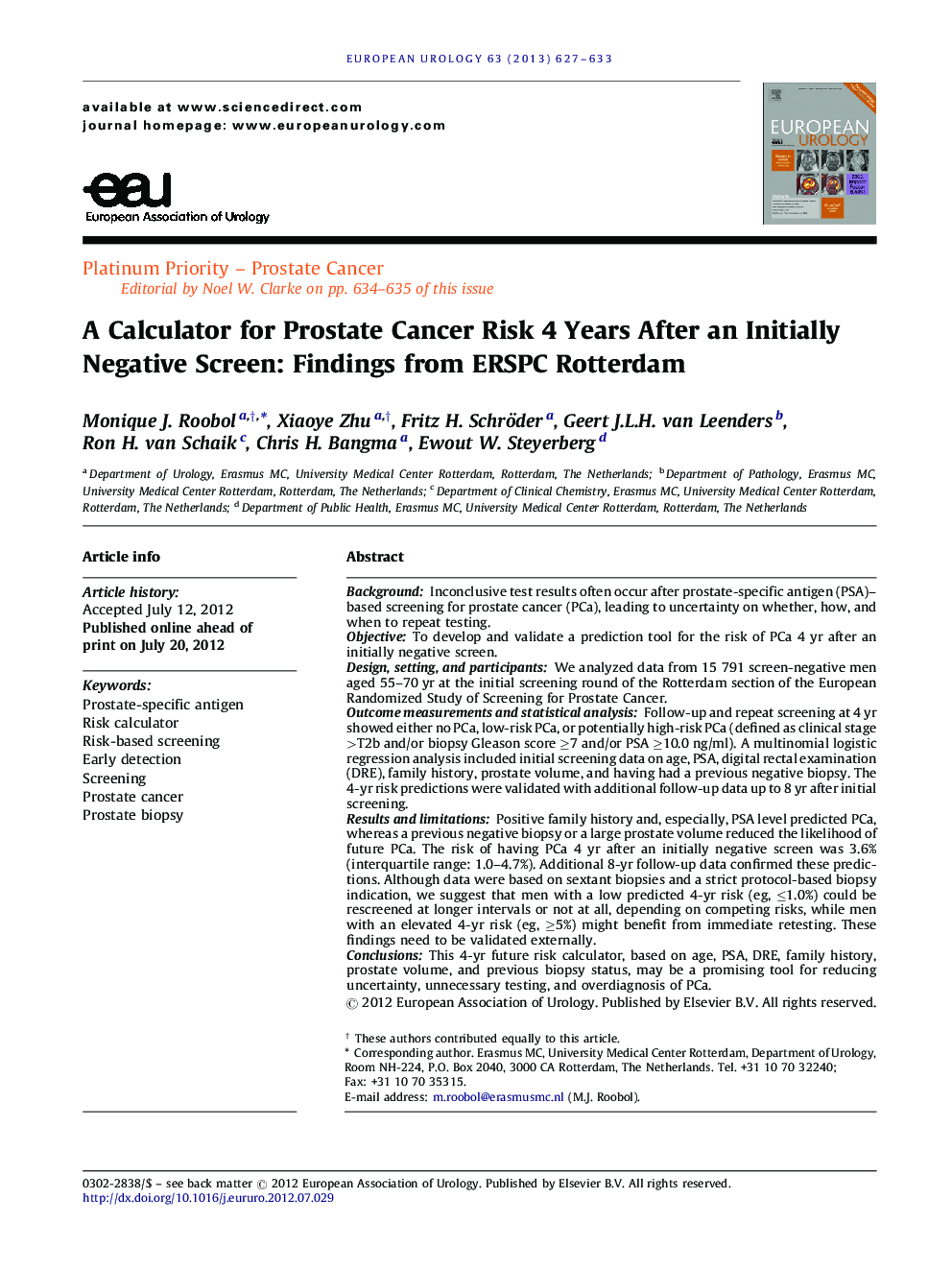| Article ID | Journal | Published Year | Pages | File Type |
|---|---|---|---|---|
| 3923945 | European Urology | 2013 | 7 Pages |
BackgroundInconclusive test results often occur after prostate-specific antigen (PSA)–based screening for prostate cancer (PCa), leading to uncertainty on whether, how, and when to repeat testing.ObjectiveTo develop and validate a prediction tool for the risk of PCa 4 yr after an initially negative screen.Design, setting, and participantsWe analyzed data from 15 791 screen-negative men aged 55–70 yr at the initial screening round of the Rotterdam section of the European Randomized Study of Screening for Prostate Cancer.Outcome measurements and statistical analysisFollow-up and repeat screening at 4 yr showed either no PCa, low-risk PCa, or potentially high-risk PCa (defined as clinical stage >T2b and/or biopsy Gleason score ≥7 and/or PSA ≥10.0 ng/ml). A multinomial logistic regression analysis included initial screening data on age, PSA, digital rectal examination (DRE), family history, prostate volume, and having had a previous negative biopsy. The 4-yr risk predictions were validated with additional follow-up data up to 8 yr after initial screening.Results and limitationsPositive family history and, especially, PSA level predicted PCa, whereas a previous negative biopsy or a large prostate volume reduced the likelihood of future PCa. The risk of having PCa 4 yr after an initially negative screen was 3.6% (interquartile range: 1.0–4.7%). Additional 8-yr follow-up data confirmed these predictions. Although data were based on sextant biopsies and a strict protocol-based biopsy indication, we suggest that men with a low predicted 4-yr risk (eg, ≤1.0%) could be rescreened at longer intervals or not at all, depending on competing risks, while men with an elevated 4-yr risk (eg, ≥5%) might benefit from immediate retesting. These findings need to be validated externally.ConclusionsThis 4-yr future risk calculator, based on age, PSA, DRE, family history, prostate volume, and previous biopsy status, may be a promising tool for reducing uncertainty, unnecessary testing, and overdiagnosis of PCa.
